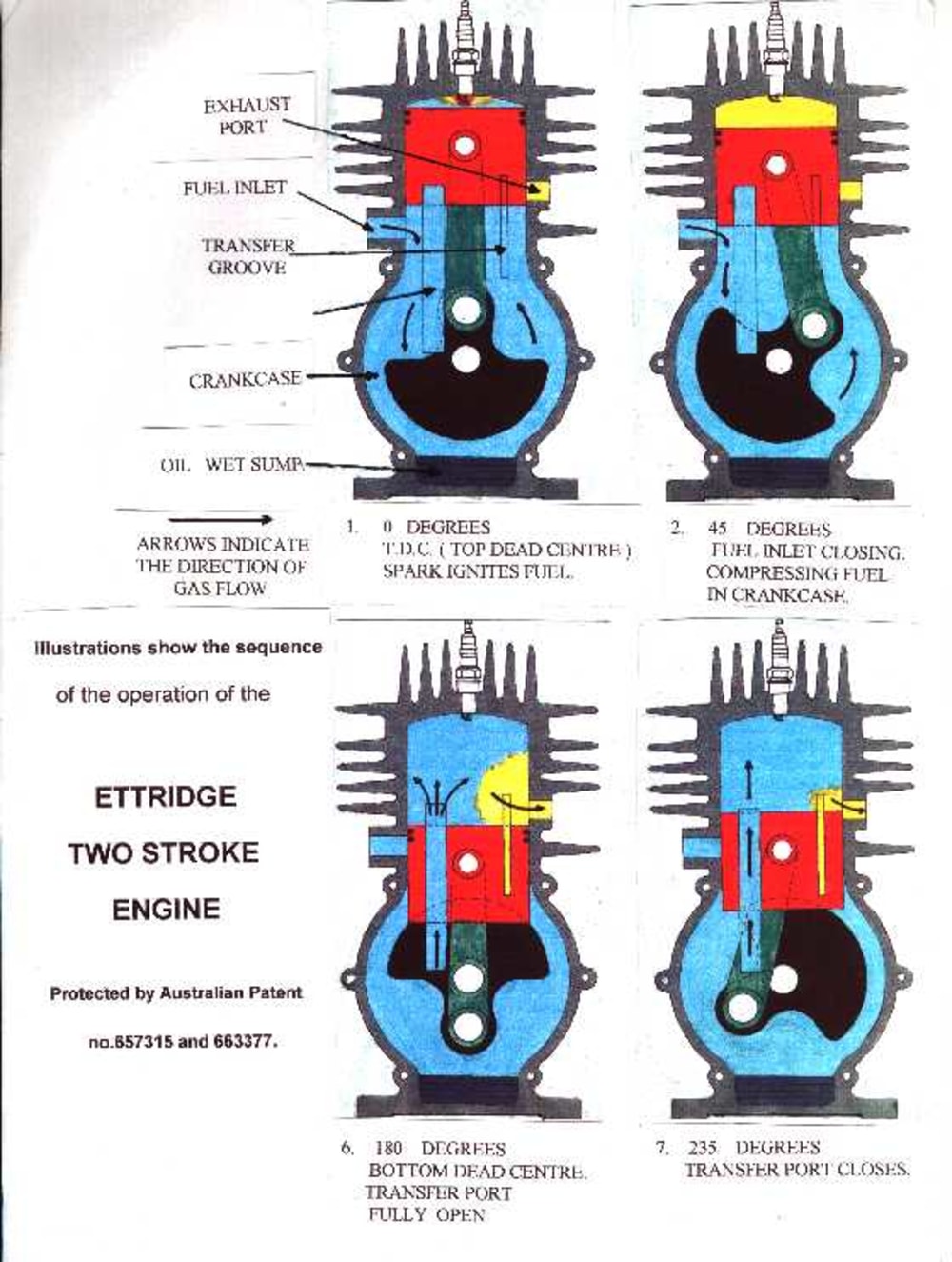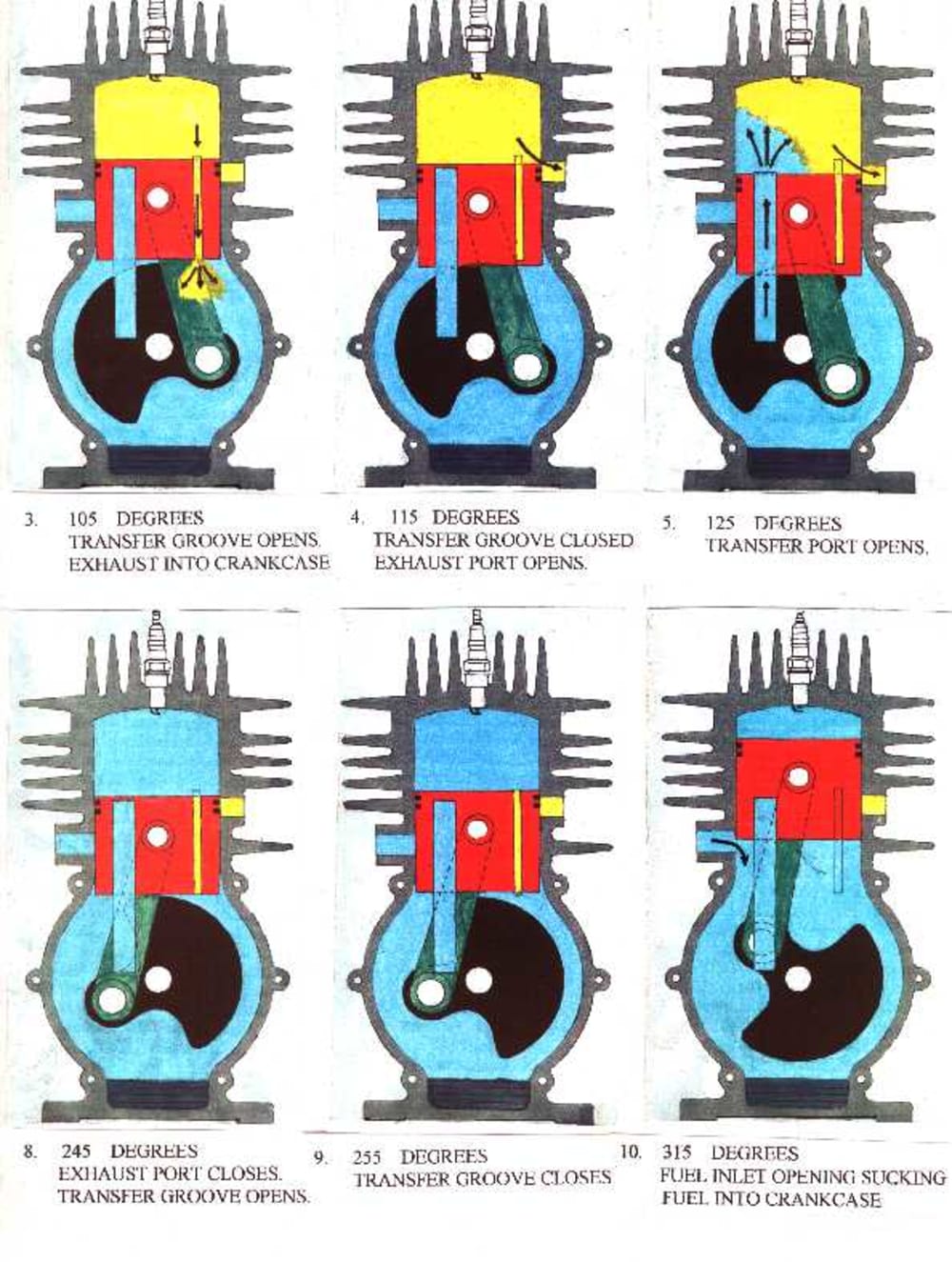The Ettridge Wet Sump Two Stroke Engine
The Ettridge Wet Sump Two Stroke Engine, was invented in 1991 and is covered by Australian patent nos.663377 and No.657315. The invention is the basic two stroke engine in its simplest form with modifications that has a porting arrangement that opens and closes to allow the exhaust gas pressure to escape into the crankcase before the exhaust port opens. This effectively raises the crankcase pressure from the normal 4-7 lb pressure up to 20-25 lb pressure, effectively super charging the crankcase. The inventor made this modification to an 18cc Kawasaki Brush cutter two stroke engine, he had his toolmaker spark erode a groove in the cylinder wall in the required position. The motor was sitting on the floor of the workshop when he replaced the cylinder to the body of the engine. He connected a chain saw revolution counter to the spark plug lead, and pulled the starter cord. (Before modification the max rpm was 7500rpm).The motor Screamed, he did not know whether to run, or try and stop the motor, the rev counter was reading 20,000 rpm , the inventor decided to stop the motor by knocking the spark plug lead from the spark plug, which he did. The cylinder bore was scored, it clearly was not made for that speed, but with hard chroming it could with stand those rpm. The second stage was to use a wet sump in the crankcase, the same as in a four cylinder motor, with the increased crankcase pressure this was now possible. Obviously you do not want oil in the compression ignition chamber, so a stainless steel wire mesh was put in the new fuel transfer ports. The stainless steel mesh effectively allows the new fuel to pass through the transfer port to above the top of the piston, into the ignition chamber while at the same time stopping the oil from passing through, and it is returned to the crankcase. This mean the engine will run hotter, and while the increased heat may be a problem for valves, a two stroke uses porting, which the increased heat is not a problem. There are improvements in fuel economy, but the biggest improvements are in the air pollution reductions. The first test using the first stage only produced results of before modification CO2 - 1.8% and Hydrocarbon 2000+ parts per million, after modification CO2 - 0.4% and Hydrocarbons 920 parts per million. I do not have test results for the second stage, but there was an obvious lack of any smoke from the exhaust. The unmodified unit sent clouds of smoke on acceleration. Lack of finance prevented the ongoing modifications to the prototype. In 1991 air and noise pollution where not a concern for manufacturers, as they had no pollution standards to reach.
Like this entry?
-
About the Entrant
- Name:John Ettridge
- Type of entry:individual
- Software used for this entry:n/a
- Patent status:patented








